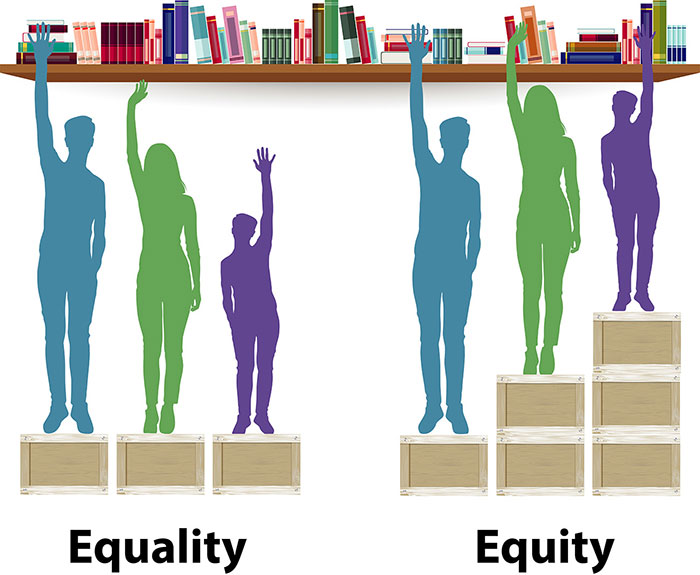What should teachers know about accommodations for students with disabilities?
Page 1: Accommodations
 More than ever, school personnel are responsible for providing high-quality instruction to all students. The Every Student Succeeds Act (ESSA) and the Individuals with Disabilities Education Act (IDEA) have increased the expectation that students will participate in the general education classroom to the greatest extent possible. More, all students—including those with disabilities—are expected to take part in state and district testing. Despite these heightened expectations, however, students with disabilities often face challenges or barriers that inhibit or restrict their ability to access and demonstrate learning.
More than ever, school personnel are responsible for providing high-quality instruction to all students. The Every Student Succeeds Act (ESSA) and the Individuals with Disabilities Education Act (IDEA) have increased the expectation that students will participate in the general education classroom to the greatest extent possible. More, all students—including those with disabilities—are expected to take part in state and district testing. Despite these heightened expectations, however, students with disabilities often face challenges or barriers that inhibit or restrict their ability to access and demonstrate learning.
Every Student Succeeds Act (ESSA)
Federal education law originally enacted in 1965 as the Elementary and Secondary Education Act (ESEA). This law now mandates the use of academic and behavioral evidence-based practices. When reauthorized in 2001, the act was referred to as the No Child Left Behind Act (NCLB). The Every Student Succeeds Act (ESSA) reauthorized the Elementary and Secondary Education Act in 2015 and went into effect in the 2017–2018 school year.
Individuals with Disabilities Education Act (IDEA)
Name given in 1990 to the Education for All Handicapped Children Act (EHA) and used for all reauthorizations of the law that guarantees students with disabilities the right to a free appropriate public education in the least-restrictive environment.
These barriers to learning can be related to:
- How information is presented (e.g., as text, in a lecture)
- The manner in which students are asked to respond (e.g., in writing, through speech)
- The characteristics of the setting (e.g., the levels of noise and lighting)
- The timing and scheduling of instruction (e.g., the time of day, the length of a given assignment)
What is an accommodation?
Teachers can address these barriers and create better access to learning by providing accommodations—that is, adaptations or changes to educational environments and practices designed to help students overcome the challenges presented by their disabilities. Some of these can be relatively simple to address. For example, a student who struggles to hold a pencil because of poor fine-motor skills might require a pencil grip to help her complete written responses. In other instances, though, addressing the barrier can prove to be more complex. A student with a visual impairment who cannot access written materials might need to be provided with braille materials.
adaptation
Allowable change in educational environments or practices (i.e., supports or services) that help students overcome the barriers imposed by a disability and provides them with opportunities to achieve the same outcomes and to obtain the same benefits as students without disabilities. Two types of adaptations are accommodations and modifications.
pencil grip
A simple device that can be placed on a pencil to allow an individual to better hold or grip the instrument or to obtain a proper position for writing.

To better understand how accommodations can address barriers that result from a student’s disability, see some examples in the table below.
| Disability Category | Barrier | Example Accommodations |
| Visual impairment | Reading printed text |
|
| Specific learning disability | Decoding text |
x
human reader An individual who reads text out loud for another person; commonly used as an instructional or testing accommodation for students who have difficulty deciphering text. |
| ADHD | Remaining focused |
|
| Orthopedic impairment | Writing out responses (due to inability to hold a pencil) |
|
With this in mind, it is important to recognize that accommodations do not change what students learn but rather how they access learning. More specifically, accommodations:
- Do not change the expectations for learning
- Do not reduce the requirements of the task
- Do not change what the student is required to learn
Teachers should provide accommodations that meet the unique needs of each individual student. Not all students with the same disability or even those who experience the same barrier will benefit from the same accommodation. For example, not all students with visual impairments will benefit from braille materials; some might be better served by enlarged-print or audio books.
Equity Versus Equality
 It is a common misconception that accommodations create an unfair advantage for students with disabilities. In truth, the supports offered by accommodations allow students with disabilities to access the same instructional opportunities as students without disabilities, thereby leveling the playing field. When educators use accommodations appropriately, they provide equity—that is, they give each student what he or she needs to successfully complete a given learning task or assignment. By promoting equity, teachers can break down the barriers that interfere with students’ opportunities to access learning. With the best of intentions, educators often strive to promote equality—giving every student precisely the same thing. However, by doing so, educators inadvertently limit the opportunities of students with disabilities to access learning. In other words, giving every student precisely the same thing does not ensure fairness or equal opportunity. To better understand the concepts of equality versus equity, view the illustration to the right.
It is a common misconception that accommodations create an unfair advantage for students with disabilities. In truth, the supports offered by accommodations allow students with disabilities to access the same instructional opportunities as students without disabilities, thereby leveling the playing field. When educators use accommodations appropriately, they provide equity—that is, they give each student what he or she needs to successfully complete a given learning task or assignment. By promoting equity, teachers can break down the barriers that interfere with students’ opportunities to access learning. With the best of intentions, educators often strive to promote equality—giving every student precisely the same thing. However, by doing so, educators inadvertently limit the opportunities of students with disabilities to access learning. In other words, giving every student precisely the same thing does not ensure fairness or equal opportunity. To better understand the concepts of equality versus equity, view the illustration to the right.